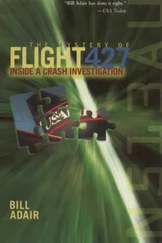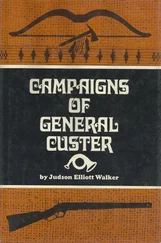He dialled the Oxford number with a shaking hand.
“Ah, Squadron Leader Milford. Good evening. Are you well?”
“Quite well, yes, thank you, Professor Belkin.” His legs were jelly.
“Good. Well, I expect you’d like to hear the results of our digging?”
“Yes, please.”
“Well, let me tell you, we had quite a week of it.” The professor spoke slowly and deliberately.
“Did you find anything?”
“No.”
The response hit Millie like a knife in his chest. His shoulders hunched forward.
“Not at first.”
“Not at first?”
“It was a case of adjusting the parameters. Initially, my erstwhile undergraduate set the computer a task of finding a variation in height readings that moved two thousand feet or more in two seconds. Something he considered would be a clear sign of an error.”
“That’s quite a dramatic change.”
“Well, yes. I thought so, too. And it provided a negative return. However, I then instructed young Strangways to look for a more moderate difference, and we settled on seven hundred and fifty feet or more in three seconds or less.”
“And?”
“And, Mr Milford, I think I can safely say there is a problem with your new equipment.”
Millie sat down on the small bench by the telephone desk.
“Tell me more.”
“We found seven instances initially. When we looked at the surrounding data, three of them were normal. The aircraft appeared to be descending or ascending as part of a planned manoeuvre, although the numbers may have exaggerated the rate of climb or descent.”
“Right, but the other four instances?”
“Yes, well, they point to anomalies. The sudden change in height didn’t fit with readings around it. A definite issue for you to resolve. Something we would call a systemic problem.”
“Incredible work. I can hardly believe it.”
“Interestingly, when we narrowed the parameters further, we kept finding anomalies.”
“How many?”
“Many. The narrower the parameters, the more we found. Small deviations, I should say. But a clear sign that there is a recurring issue with the data received by the computer from whatever is feeding it.”
“I want to say I’m relieved, but it doesn’t feel like the right reaction. In fact, as I think about it, I’m becoming angry.”
“Well, I must remind you, this is a very small sample size. We measured less than thirteen hours of data according to the time field.”
Millie toyed with his pen.
“I understand, but from what you’ve seen, you believe this is enough to predict actual losses?”
“Well, that brings me on to the more complex side of the equation.”
“More complex? I’m only just keeping up as it is.”
“Then I’ll try and be gentle with you. Now, you may wish to make some notes. We’ve done what we can to be as accurate as possible on the limited information. One of the students found a Parliamentary Written Answer on Royal Air Force establishment numbers with predictions for the next five years. From there we made an estimate of flying hours and within those hours, an estimate of low-level flying.
“After that, we applied the occurrence frequency we found on your tapes. That produced a startlingly high number of incidents.”
“Really? How high?”
“I can’t recall the actual rate, but too high. So high that you would have experienced mishaps every week, just during this trial.”
“So the data is wrong? Or your calculations are wrong?”
“Neither, I’m happy to report. We went back to the detail of the incidents and realised that in the vast majority of cases, the incorrect readings would go unnoticed.”
“Unnoticed? Can you explain that? How would a crew not notice a sudden change in height?”
“Because the erroneous height information would be just a quick burst, in many cases less than a second. So the aircraft would either not have time to react, or would only just start to change velocity, before the correct readings flowed through, cancelling any required change.”
“I see.”
“We refined the search parameters and asked the mainframe to search for those large variations. This is where it gets interesting.”
“Go on,” Millie said, pen poised over the back of one of the data sheets.
“While far rarer, longer bursts of incorrect data that could affect flight do occur. Although, again, in many cases we estimate this would be inconsequential.”
“How so?”
“Firstly, the higher the aircraft is from the ground, the less likely that even three seconds of deviation could cause an actual accident. Secondly, even at low-level, when straight and level, the aircraft would often recover itself, even without pilot interference, as the wrong height readings would run out and be replaced by the actual distance to the surface. But…”
“But?”
“Well, that leaves us those occasions when an aircraft is low, fast and banked, when even two to three seconds worth of incorrect height information could be catastrophic. Add into that scenario a flight at night or with restricted visibility and you have an unwelcome circumstance. Albeit rare.”
“How rare?”
“We estimate 0.014% of the time.”
“Small enough to be inconsequential?” Millie asked.
“Not when you apply that frequency to the overall hours. Now, the number I’m going to give you is based on our predictions and it involves a good deal of extrapolation on a limited data supply. So, fair warning of its accuracy. We estimate the RAF will operate around two hundred and sixty-two hours of training flights at low-level, around the world, per day, over the next couple of years.
“If we guess that fewer than half will employ your new system, that still leaves twenty-five thousand hours over the course of a year.
“Even at just 0.014%, that points to 3.5 aircraft caught in the very worst of scenarios.
“Now, you told me the system will be fitted to a range of aircraft from those with two seats to those with a crew of four or even five?”
“That’s correct.”
“So, another guess is the average number of crew members per aircraft. We rounded that to 2.5.”
Millie quickly did a calculation.
“8.75?”
“Indeed. 8.75 is the number we reached. In our view, based on limited data and much guesswork, the Royal Air Force would expect to lose 3.5 aircraft on average each year, risking the lives of 8.75 crewmen.”
Millie stared at the figure at the base of his scribbled notes.
“8.75. And you’re sure?”
“No, we’re not sure. But with more data, a refined figure will be more certain.” The professor paused. “However, the important point here is that the true number will not be zero.”
There was a long silence on the phone.
Eventually, the professor spoke again. “Mr Milford, may I ask you something?”
“Of course.”
“You told me you would speak to the station commander at West Porton, correct?”
“Yes, that’s still my plan.”
“You also told me the man in charge of the project wields a lot of influence?”
“Yes.”
“May I ask, is the station commander trustworthy and able to support you in what you ask for?”
Periwinkle had never come across as a strong character; Kilton got the better of him most of the time.
“I can’t be sure.”
“Well, if you don’t mind me making this observation, I think you may place yourself in a challenging position if, for instance, the conversation with the station commander does not go as you would like.”
“I know what you’re saying, Professor, but I can’t see a less risky option. My alternative is to contact the government, and I wouldn’t know where to start.”
Читать дальше












